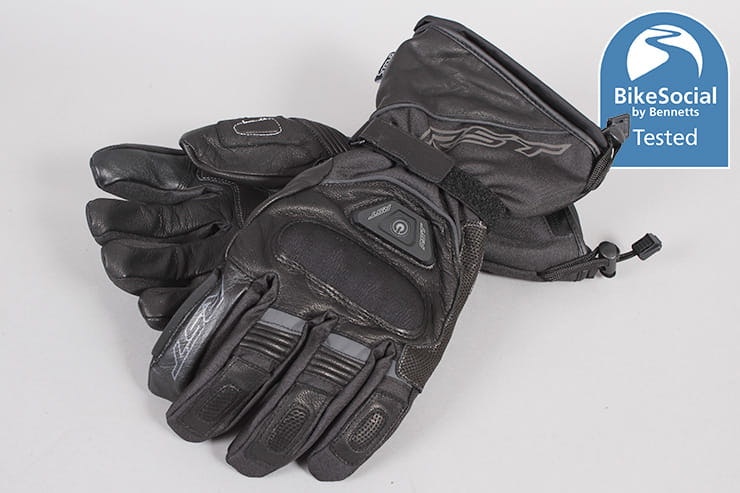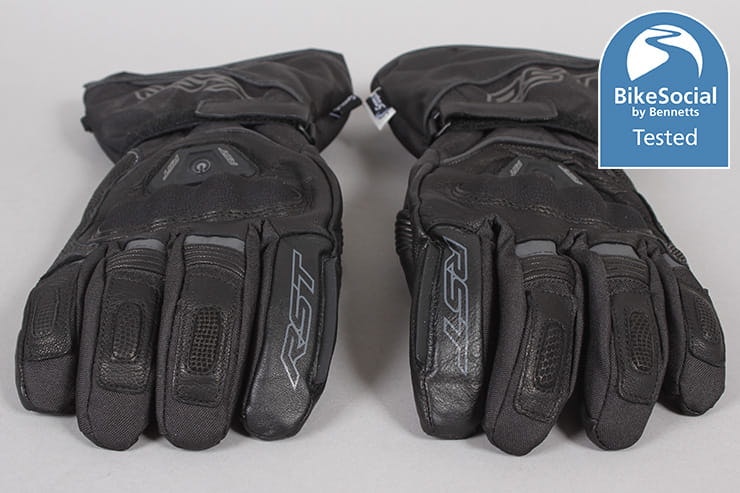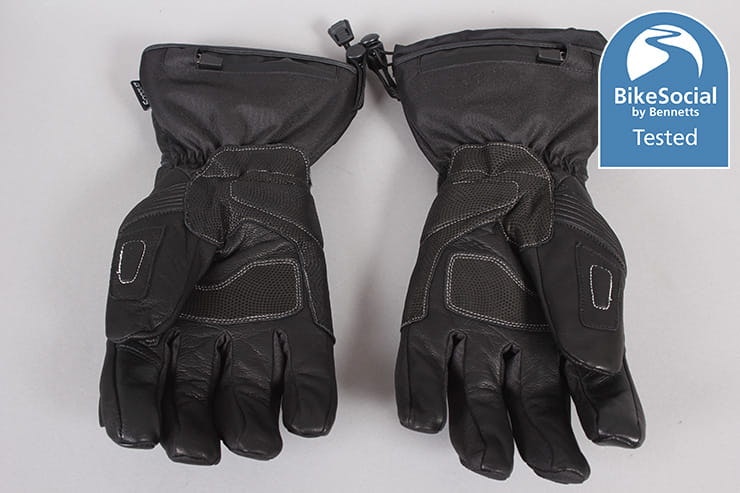RST Paragon 6 review | Heated motorcycle gloves
By BikeSocial Member
Everyday riders, just like you...
29.11.2021
Date reviewed: November 2021| Tested by: Jon Mansfield, BikeSocial member | RRP: £189.99 | www.rst-moto.com
Back in 2019 we reviewed the original battery-powered RST Paragon heated gloves, recommending them for winter rides and celebrating their lack of cables. Now they’ve been updated in the form of the new Paragon 6, RST says that it’s taken on user feedback to upgrade the gloves, while maintaining the same RRP.
We gave a set to BikeSocial member and motorcycle instructor Jon Mansfield to find out how well they perform…
Battery power means no faffing with cables
Comfortable and good feel
Drawstring cuffs keeps them dry
No option to hard-wire to bike
Batteries a little bulky in some situations
Fit and feel
Of course you have to try any kit on for yourself before you buy it, but I usually take XL-sized gloves, and these RSTs fit me perfectly.
I’ve got wide hands and sausage fingers, but had no issues with these. Plus, despite being winter gloves, they have very good feel. I have to operate a small button on the radio when I’m working, but it’s easy to do with the Paragons on, so using the indicators and horn on the bike’s no bother.
My one complaint is that the batteries are quite bulky, and I do find I need to leave my watch off when wearing these as that (a G-Shock) tends to get pushed down hard onto my wrist by the pack in each glove.
Warm and cold weather use
These are definitely winter gloves… maybe early Spring and late Autumn too, but anything over 15°C and they’re way too hot to wear (with the heaters off of course), making my hands feel clammy.
But in the winter, they’re great! My Honda Deauville has wind deflectors on the fairing that make a real difference; keeping the airflow away from your hands is well worth doing if you ride in winter.
I do have the luxury of heated grips, but all I need is those on low, and the gloves on the same setting – just ticking over – and I’ve been fine in days that start at 2°C and don’t get over 5°C.
I do sometimes wear the RST Paragons without the heaters running, but it’s so easy to turn the on and off that I usually have them powered up when they’re on.
I rarely need to use the higher temperatures available but my bike’s wind protection does really help. If it’s really cold I’ll put them on high for ten minutes, then turn them down and have them on tick-over for the rest of the journey as I don’t want them to run out of power.
Without the heated grips these are still warm of course, but with any heated gloves – which all have the elements on the backs of the hands – heated grips are the perfect partner for serious winter riding. And wind deflectors. Or bar muffs, but they have to be good ones as the cheap tat bends back at motorway speeds and pushes on the levers. Plus if someone pulls out on you, you can’t give them the bird as your hand’s in a sleeping bag.
Power
As with the previous model, RST claims up to four hours of power from the 7.4V 2,200mAh batteries. Before sending me these, BikeSocial’s Consumer Editor, John Milbank, tested the run times and found that, in full power, the RST Paragon 6 gloves lasted 2 hours and 44 minutes, which is 17 minutes less than the previous model that he tested.
In medium they lasted 3hr 34mins, which is about 20 minutes down, so in line with those results.
In low power mode, where RST says they should last up to four hours, these new gloves stayed on for an impressive 5 hours 6 minutes, though down from the six hours of the originals.
It is important to remember that the power mode you use will depend on how out of the wind your hands are, but I’ve got on great with them, really appreciating the extra warmth, especially as I suffer from arthritis at times.
The difference in colour between medium and high is hard to see
Control
As with the old model, each glove is turned on by pressing and holding the button on the back, then cycled through modes with a short press.
The Paragon 6’s controls are a little easier to use, but you will still have the issue of working the right glove easily, but needing cruise control to adjust the left. Or get your speed up before letting go of the grip and hitting the button. Or press your left hand up under the mirror if that’s an option. Or pull over and do it safely, as I always would, obviously.
The LEDs still aren’t all that bright, and the difference in colour between medium and low is hard to spot.
Protection and certification
These CE Level 1 gloves (EN 13594:2015) feel well-made and sturdy, the armour on the knuckles giving extra confidence without appearing intrusive like some can. These protectors are included in the testing, and there are extra layers on the palms and outsides of the gloves.
I also like the fact that, while there’s not a lot of it, there are reflective panels on the fingers, as well as the piping.
For everything you need to know about the safety labels in your motorcycle kit, click here.
Fastening
When I’m working in the CBT area I tend to just leave the straps a bit loose, then slide the gloves on and off. A useful upgrade here over the old models is that the end of the strap is flared, which stops it pulling out of the loop and being a fiddle to poke back in when you’re trying to get on the road.
There’s no strap on the cuff, but there is a drawstring to help seal them, the spring clip for which is attached to the glove, making it easy to pull tight with one hand.
Wet weather use
So far I’ve suffered no leaks at all. The best way to wear gloves in the rain is with them tucked underneath the sleeves of your jacket, and while you can do this with the batteries removed, if they’re in you’ll definitely struggle.
The problem comes if water runs down your arm and into the gloves, wicking throughout them. Fortunately, that draw-string design seems to seal very well, keeping my hands good and dry.
Lining
This is a plush lining that I’m more than happy with. I haven’t had any issues with it feeling like it’s going to pull out, but of course I’d always recommend gripping the ends of the fingers when taking any lined gloves off.
Three alternatives to the RST Paragon 6 heated gloves
We love heated gloves, and once they’ve tied them, most winter riders agree. Here are some other options…
The Furygan Heat Blizzards aren’t very good in the rain, but they do have a brilliant control system that sees them linked together. Check out the review here.
The Keis heated gloves on review here can be powered by the bike or batteries that you can tuck in their cuffs, though these are sold separately.
Gerbing is the other big name in motorcycle gloves, and while it’s a long time since we tested any, these XRS12s proved a decent pair of hard-wired mitts.
These are just three of many alternatives – you can find all the gloves we’ve tested here and be sure to regularly check for the discounts available through BikeSocial membership.
RST Paragon 6 heated gloves review: Verdict
I would definitely recommend the RST Paragon 6 gloves to my students, though I would say that you should try them with your jacket first, to be sure how comfortable they feel – those batteries cause a bit of bulk that might bother some people.
I prefer this style of heated gloves as I’m not getting tangled up in wires, or having them dangling like a school-boy, but they do of course have limitations of run-time.
For me, they’re a brilliant solution, but long-distance winter riders might want to look for a hard-wired alternative.
Do you have a pair of these gloves? Email us at enquiries@bikesocial.co.uk to tell everyone what you think of them…


